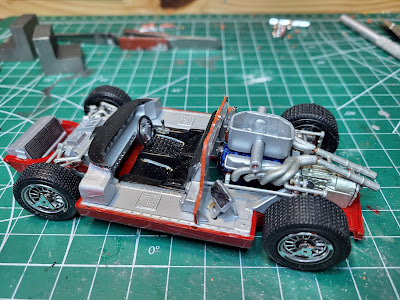Lots of sorting, cleaning, sanding, drilling, filing, grinding, etc., all to get the basic engine block glued up and the camshaft installed.
The narrow-angle V16 has a single camshaft acting on intake valves in both heads via rockers, and on the exhaust valves via individual pushrods and rockers. The cam drive is via a bevel gear at the back end of the engine, probably related to the compressor drive. The inlet manifold from the compressor runs under the cam and intake rocker box.
This photo looks towards the front of the car and shows the left-side cylinder head and exhaust valve pushrods installed, along with the bevel drive for the cam.


















































